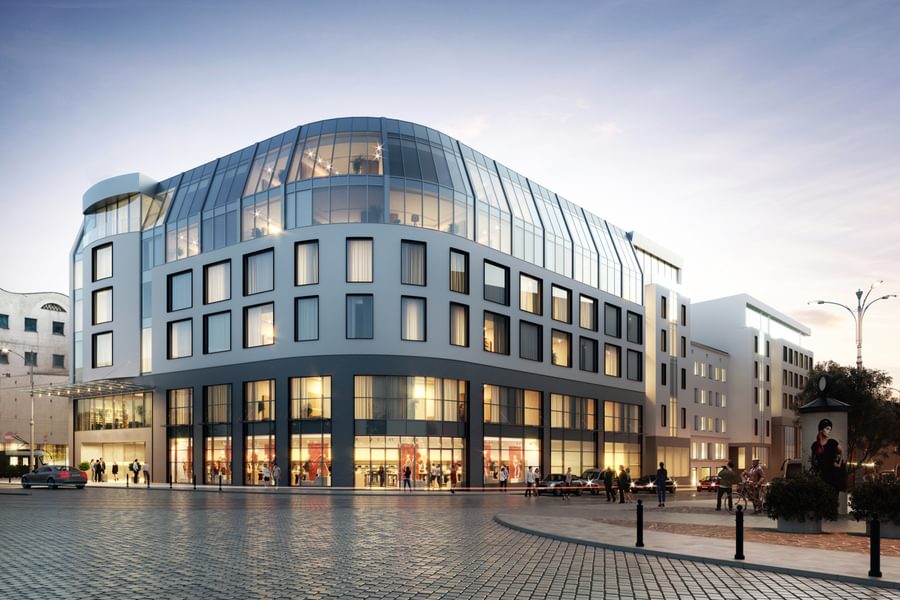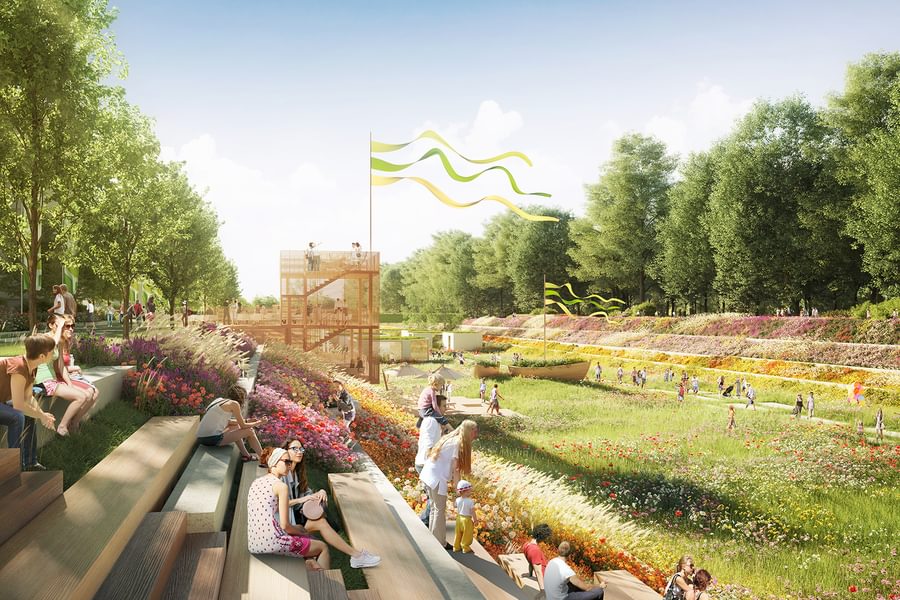
STUDIO FOCUS: Chapman Taylor's Warsaw studio
Director Rafal Giersz takes us on a whistle-stop tour of some of our Polish studio’s recent mixed-use and community-focused projects and outlines his hopes for a more sustainable future.
In Poland, we have always had a strong reputation as retail architects. We are still active in this sector, but shopping centres and retail outlets are changing to adopt a bigger mix of uses. This is where our wide range of expertise comes in useful. Post-Covid, people are looking for physical and social experiences as well as in-person shopping. They expect a wider range of food and leisure options at shopping centres or retail parks.
This requirement for variety is influencing the design of many of our projects. In Poznań, the Kupiec Poznański mixed-use complex is one of the most easily recognised buildings in the heart of the city, located near the Old Town Square – making it ideally placed for business and tourist visitors. In addition to office spaces for the strongly growing business sector in the city, the redesigned retail and F&B elements will cater for the increasing numbers of tourists visiting Poznań and offer a relaxing and attractive atmosphere. We are incorporating a new 4-Star Marriott-branded hotel, redesigning the common areas and upgrading the facades.
It's very important to us that the buildings we design don't exist in isolation from the communities that they serve. When we had an opportunity to submit design concepts for the RKS Marymont Stadium and OSiR Żoliborz sport and recreation complex in Warsaw, we were thrilled to take part. The complexes were built in the 1920s and are a big part of the wider community. It was really interesting for us to work with the stadium operator, local residents and local authorities. Two concepts have been created and taken to public consultation, both of which envision re-building the communities of visitors through well-designed and well-managed indoor and outdoor spaces for recreation. The centre has a great tradition. We will build on the legacy of the place and create a new sense of identity for the locality in 2023, with renovations appropriate to historical monuments.
An equally complex but rewarding project that has involved a huge number of stakeholders, including the local authorities and local communities, is World Horticultural EXPO.
In 2018, the city of Łódź in central Poland was awarded this international exhibition showcasing greenery and landscaping in urban environments. We designed a masterplan concept that represented a step-change for EXPO, with an intensive focus on being ecologically friendly - regenerating, restoring, recycling, repurposing and reusing. Initially, local communities were nervous about what the EXPO would entail, so we consulted with them extensively throughout the planning period, holding meetings and demonstrating its long-term value. We were able to show that at the end of the EXPO, public spaces will be permanently enhanced and made more beautiful. Parks will be renovated and upgraded, with new paths for running and walking, for example. The benefit of the investment will continue for the community both socially, in terms of people's enjoyment of their environment and quality of life; and economically, attracting visitors to the area. There was a real change in people’s sentiments towards the EXPO after our consultation period.
The EXPO is expected to attract 4.5m visitors in 2029 and it was awarded “Best Landscape Architecture for Poland” at the 2021-2022 European Property Awards.
Respecting the environment is a key consideration for us. We have also been working on a 4,100 ha development plan for the surroundings of the artificial Lake Tbilisi Sea and the preparation of a pro-ecological strategy related to this water reservoir. The area has value due to its biodiversity so we will be introducing protected areas for flora and fauna.
Future strategy
Going forward, we’d like to communicate our sustainability credentials more strongly. The ecological aspect of designing is crucial. In Poland, it’s really important that there is a step change in the market. We need to communicate to investors everything that we understand about embodied carbon, the need to reuse materials, circular buildings and other sustainable initiatives, and to create the right atmosphere for this change.





